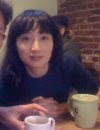 I am applying for architectural teaching positions at undergraduate liberal arts colleges. In order to do that I had to really think through what my pedagogical philosophy had become. It really was a great journey of discovery much like life itself and so I thought that I would share this journey with you. It ended up being so long that I am going to have to share it in several parts.
I am applying for architectural teaching positions at undergraduate liberal arts colleges. In order to do that I had to really think through what my pedagogical philosophy had become. It really was a great journey of discovery much like life itself and so I thought that I would share this journey with you. It ended up being so long that I am going to have to share it in several parts.MIT
The Boston Architectural Center (BAC)
Travel and Professional Experience
Sensory Overload
What is Essential?
The Pursuit of Enlightenment
Journey's End
MIT
When I was at MIT in the 1980’s, the school was literally grounded in a movement called “Built Form” rooted in the 1960’s. It was considered the “Truth” and the school was almost totalitarian in its instruction. Nevertheless, I was a sponge and soaked up its contents which added to my lifelong base for learning, architectural and otherwise, and I am a better person for the education.
The best of this education arose from the philosophical theme that nothing of value is understood without its opposite. That in fact the built form that we see is a setting for the experience of the space between. As in black and white photography and drawing, the white space is derived from the dark space. In architecture, light cannot exist without the structure which defines its forms. However, the habitable and immaterial space which is the essence of buildings is nothing without the forms which accompanies the space. Space is a derivative of form.
Central to my learning was research involving the urban architectural forms of Cordoba, Spain. Under the guidance of a strong mentor, we explored the tangible and intangible contextual forces in conjunction with site, material, structure, light, gravity, movement, water, walls, distance, magnitude and their interrelationships. This undertaking along with the study and analysis of great architectural works of the past and the present formed the crux of my education, culminating in the transformation of a triangular urban site into the design of a building complex at the center of my master’s thesis.
But MIT had difficulty entering the approaching new millennium and addressing the needs of modernity. That is, until the advent of a new movement centered on the imaging of architecture with computers, which found a footing in the liberating graphic medium and gained momentum. By that time, I had graduated, but was relieved to find the school trying out new ideas. But for me, computers in themselves could not fulfill a more intuitive need for metaphor, poetry and meaning. This need found an outlet in my teachings at the BAC and in some of my professional endeavors.

No comments:
Post a Comment